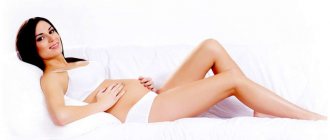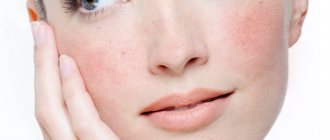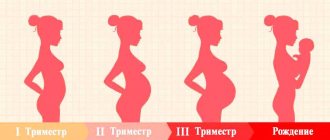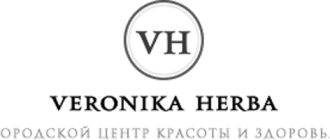Botox injections into the neck are a rejuvenating cosmetic technique that successfully fights age-related skin changes and prevents the appearance of new ones. The skin on the neck and décolleté is much thinner than on other parts of the body, so it begins to age earlier, revealing a person’s true age. The Botox procedure in the neck is safe, painless and effective. The first results can be assessed within 3–4 days, and the maximum effect develops within 15–20 days. The skin at the injection sites is noticeably smoothed, rejuvenated, fresher and more attractive. Cosmetologists of the International Clinic of Hemostasis use only certified drugs, selecting the dosage and administration regimen taking into account the individual characteristics of the patient’s body. Such a responsible approach eliminates the risk of developing negative consequences and guarantees maximum effect.
Operating principle
Botox is a drug made from botulinum toxin A. Neurotoxin injections block neuromuscular impulses and immobilize the muscle. The goal that is achieved is the smoothing of wrinkles that have formed as a result of active muscle activity. If the muscle is paralyzed for a certain time, the crease formed on the skin will gradually smooth out and disappear. Until the effect of the drug ends and it is completely eliminated by the body, the muscle will get used to the static position, which will prevent the appearance of new wrinkles in the same place.
Which drug is more effective?
Let's compare the effectiveness of Botox and its analogue from South Korea.
Botox:
- Easily tolerated, complications are rare.
- Low effectiveness in eliminating deep wrinkles.
- The effect increases gradually from 2-3 days. Maximum result at the end of the second week.
- Frequent repeated injections form an addiction to the drug and reduce its effectiveness.
- The result lasts 6-8 months.
- Good lifting effect: the corners of the lips and brow ridges are raised.
- High price due to the popularity of the brand.
Botulax:
- Affordable price. Competitor in price even for domestic products.
- Peculiarities. The drug's production technology and components are similar to Botox.
- The duration of the effect is 4-6 months.
The general features of the drugs are targeted effects, preservation of natural facial expressions and gestures. The effect of the drugs does not extend to nearby tissues.
Advantages and disadvantages
The advantages of botulinum therapy compared to other anti-aging procedures are undeniable:
- Safety. Despite the fact that Botox is a powerful toxin, in microdoses it does not harm health in any way. To cause intoxication of the body, you will need to administer a dose that is many times higher than normal.
- High performance. The first results can be assessed immediately upon completion of the procedure. Within a week, the effect will strengthen and last for about 6 – 10 months.
- Natural removal of botulinum toxin from the body. After the expiration date, the drug leaves the body on its own, so it will need to be re-administered.
- Almost complete absence of side effects. The procedure performed by an experienced specialist reduces the risk of complications to zero. Negative consequences can develop if the rules of rehabilitation are violated, so the patient must be responsible for their compliance.
Botulinum therapy with Botox 1 unit. 300 rub. Consultation with a cosmetologist, subject to the provision of the service on the day of consultation 0 rub.
All prices Make an appointment
The disadvantages include the following:
- To maintain the rejuvenating effect, regular repetition of the procedure is required.
- There is a risk of developing specific and nonspecific complications.
- The procedure must be carried out by a high-level specialist with the appropriate skills and work experience.
- The technique has a number of contraindications, ignoring which can lead to unpredictable consequences.
Dermatologist and cosmetologist of the clinic Elena Filatova answers popular questions about Botox.
1. Is Botox toxic?
Botulinum toxin was first studied back in 1960, almost 30 years later - in 1989, the FDA approved the drug for the correction of strabismus and blepharospasm. Further, the FDA and the EU allow the use of botulinum toxin not only in ophthalmology, but also in urology and neurology.
In 2002, the FDA approved the drug Botox for use for aesthetic reasons (getting rid of expression lines on the forehead and around the eyes). This moment is considered to be the beginning of the official history of using the drug in cosmetology.
7 years later, in 2009, the French drug Dysport was registered in all European countries and also received FDA approval.
During 2002-2003, 2 large double-blind, placebo-controlled, randomized, multicenter clinical trials were conducted, which confirmed the high level of safety and effectiveness of the drug in the treatment of facial wrinkles.
As a result of studies on primates, a semi-lethal dose was established, which is about 3000 units of BOTOX for an adult weighing 70 kg.
The approximate ratio of Botox units to Dysport is 1:2.5. In cosmetology, about 30-50 units of Botox are used, up to 100-150 units in the treatment of hyperhidrosis - this is a fairly low dosage that allows only local effects on the muscles.
2. After Botox it will only get worse and you will need to inject it for the rest of your life.
If there is pronounced facial activity and there is a desire to reduce it, injections can reduce the formation of new wrinkles and folds; in addition, it is possible to visually smooth out existing imperfections.
Within a few days after administration of the drug, the functions of the receptors begin to gradually recover, and after 3-6 months full facial activity returns. Therefore, the effect of botulinum therapy is reversible, and you yourself decide whether to repeat the injections or not.
3. Is it possible to inject Botox into the lips?
About 15 years ago it was thought that this was impossible. But today this is reality: a cosmetologist can slightly open the lips with the help of botulinum toxin, and also reduce the number of wrinkles around them.
4. Due to botulinum therapy, eyebrows droop and eyelids droop.
There is some truth here, but it cannot be said that this is a true statement.
Such cases may occur when:
- Using an uncertified drug
- Haste, administration of dosages that are higher than recommended
- Over 60 years of age and prone to swelling
- Taking medications
- After operations in the facial area.
A cosmetologist must undergo long-term training to prevent such a situation. Important:
- Improve your knowledge in understanding the anatomy of muscles and their functions
- Calculate sufficient and safe dosages for each patient, take into account indications and contraindications
- Discuss risks with older patients.
To do this, the procedure is often carried out in 2 stages, thus reducing the risk of side effects.
5. Which is better: Dysport or Botox?
Any certified drug in Russia is equally safe and effective. Each drug has its own characteristics in its composition and each of them is original. Everyone has their own dosage recommendations when working with muscles. It is difficult to compare them, therefore statements about which is better are subjective.
6. Is it true that after an injection the face turns into a “mask”?
When the drug is administered, the patient’s wishes are taken into account, and based on this, dosages and areas of exposure are selected; this allows one to maintain mobility of the eyebrows or slight facial activity in the forehead (if desired).
7. Why doesn't Botox work for me?
This situation is possible, but it happens very rarely. Various sources indicate that 0.6-4% of people are not sensitive to the effects of botulinum protein. The exact reasons why this occurs are not yet known, but it is believed to be related to the presence of neutralizing antibodies to botulinum protein type A. To prevent the formation of neutralizing antibodies to BT, certain risk factors must be avoided. These include:
- A high single dosage of the BTA drug.
- Short intervals between procedures (less than three months)
- Frequent “booster injections” (every 2 weeks)
- Individual characteristics of the reactivity of the human immune system.
It is important to consider the quality of the drug: you should not use a drug with a questionable composition and a low degree of purification.
In cosmetology, mainly low doses of BTA are used (for the correction of wrinkles) or procedures are carried out at long intervals (during the treatment of hyperhidrosis). Therefore, seroconversion occurs very rarely (in 0.28-0.46% of patients).
Indications and contraindications
The Botox procedure in the neck muscles is prescribed to patients over the age of 30, because it is at this age that the first age-related changes are observed. Botulinum toxin injections effectively combat the following skin aging problems:
- flabbiness, looseness, loss of elasticity, tone;
- deep circular folds;
- vertical and horizontal wrinkles;
- formation of a double chin;
- pronounced gravitational ptosis and blurred oval face.
Like any injection rejuvenating technique, botulinum therapy has its contraindications. Therefore, before prescribing it, you need to visit a doctor and undergo tests, the results of which will help assess your overall health.
Botox injections to the neck are contraindicated if the patient is diagnosed with:
- oncology;
- diseases of the hematopoietic system;
- inflammatory processes in the area of injections;
- myasthenia gravis;
- chronic diseases in the acute stage;
- endocrine and hormonal disorders;
- somatic and mental disorders;
- cardiac, renal, liver failure;
- individual intolerance to the components of the drug;
- tendency to form keloid scars.
Botulinum toxin injections are contraindicated for women during pregnancy and breastfeeding. Also, the procedure is not prescribed to patients who are forced to regularly take the following groups of drugs:
- antibiotics;
- anticoagulants;
- muscle relaxants;
- non-steroidal anti-inflammatory drugs.
Why Botox?
As a rule, there are no neurotoxins in products produced by well-known brands in the beauty industry. But the technology received such a name is not accidental. The fact is that the principle of action of the Botox procedure for hair is in many ways similar to the action of botulinum toxin. The difference is that botulinum toxin acts on the nerve endings, while the ingredients in hair serums have a similar effect on the hair shaft. Here's how it happens.
Botulinum toxin is a large protein molecule that is embedded in the membranes of nerve synapses (terminal sections of nerve cells) and thereby blocks the transmission of nerve impulses. There are no nerve endings in the hair, otherwise every haircut would turn into unbearable torture and would be carried out under anesthesia. But the products do not contain Botox either - they replace it with other substances that have something in common with botulinum toxin.
The products contain protein molecules that act on the hair shaft like botulinum toxin on nerve cells. They penetrate the cortex and thereby change its spatial structure. They change it in such a way that the strands and curls become strong and elastic, the hair acquires the long-awaited shine and volume.
Preparation
Botox injections in the neck are carried out provided that the patient is completely healthy and feels well. The procedure requires simple preparation. A week before the manipulations, it is necessary to exclude from the diet salty, spicy, fatty foods that contribute to the formation of edema. In 2–3 days, you need to completely give up alcohol, limit physical activity, stop taking hormones, antibiotics and other medications prescribed by your doctor.
Immediately before administering botulinum toxin, the cosmetologist conducts a thorough examination of the problem area, assessing:
- type of wrinkles and the specifics of their location;
- Tugor;
- anatomical features.
Cosmetologist's answers to questions
Young mothers often ask cosmetologists about anti-aging injections while breastfeeding, especially about Botox. We have compiled a selection of frequently asked questions.
When can rejuvenation be performed?
Botox is contraindicated for a nursing mother; no responsible cosmetologist will say that you can inject the drug. He will recommend waiting 2.5 - 3 months after weaning the baby. During this period, the hormonal levels will return to normal, the woman’s body will restore its resources after breastfeeding.
What procedures can replace Botox injections?
For nursing mothers, experts recommend replacing Botox with more intensive care (creams, masks, peelings). Laser is permitted as a cosmetic procedure.
| Procedure | Effect |
| Creams with anti-age effect based on natural ingredients. | Moisturizing and nourishing the skin, accelerating regeneration processes. |
| Masks with a tightening and smoothing effect. | Stimulates the production of your own collagen. The complexion becomes fresh. And the skin is smooth. |
| Homemade scrubs. | Cleansing, stimulating skin cell renewal. |
| Salon peelings. | Actively stimulate regeneration, deeply cleanse, and have a pronounced anti-aging effect. |
| Laser rejuvenation. | Smoothing of facial wrinkles, fresh healthy complexion. Elimination of post-acne marks and age spots. |
A cosmetologist’s opinion on the question “Is it possible to perform Botox injections during breastfeeding?” watch in the video:
Does the age of the child affect the ban on injections?
Botox has a negative effect on the child’s body regardless of age; a nursing mother does not need to think that it will be less for a one-year-old baby.
How is the procedure done?
Botulinum therapy for the neck includes the following steps:
- Makeup removal and skin disinfection with an antiseptic solution.
- Applying anesthetic cream or gel.
- Marking injection points. Injections are given in 2 rows. The distance between them should not exceed 2 cm.
- Introduction of botulinum toxin. The drug is injected into the main muscle, the direction of the injections is along the muscle cord.
- Applying a soothing, cooling gel.
The procedure lasts on average 10 – 15 minutes. After botulinum therapy, the patient is under medical supervision for 1.5 - 2 hours. If no complications arise during this time, you can go home and do your usual activities.
What effect should not be expected?
Considering that during pregnancy, hair often falls out due to hormonal changes, mechanical and chemical procedures aimed at restoring the hair structure will not lead to the desired effect in this case. In addition, Botox does not at all accelerate the growth of new hair in place of lost hair, since its effect is aimed at something else. First of all, this procedure makes the hair visually thicker, smoother and shiny. Botox strengthens the hair structure, eliminates split ends, and protects against harmful effects.
If there is severe hair loss, a pregnant woman should consult a gynecologist so that he can prescribe medications that have a positive effect on hormonal levels. It is useless to try to solve this problem with the help of Botox: if the procedure gives an effect in this case, it will only be short-term, while the real cause of hair loss will not go away, but, on the contrary, will worsen.
Recovery period
The rules of the rehabilitation period are announced by the cosmetologist after the procedure. It is important to strictly follow the specialist’s recommendations in order to consolidate the result and prevent negative consequences:
- In the first 4 hours after botulinum therapy, do not take a horizontal position. You can only sleep on your back with a high pillow under your head.
- For 4–5 days, stop using decorative cosmetics.
- For 2 weeks, exclude salty, spicy, fatty foods from the menu, stop drinking alcoholic beverages, coffee, and strong tea.
- Limit sports activities.
- Refuse to visit the solarium, swimming pool, sauna, bathhouse, and do not take hot baths.
- Do not massage, peel, or scrub until complete recovery after Botox injections.
What could be the consequences of injections during breastfeeding?
The consequences of Botox during breastfeeding will be unpredictable not only for the child, but also for the mother. A woman's body is recovering after childbirth. The level of hormones due to breastfeeding differs significantly from the normal state. Any stress is contraindicated. And the body will perceive beauty injections this way. The effect of botulinum toxin on the body of a nursing woman
During lactation, the side effects of Botox injections will increase. And, therefore, their results may not be predictable.
Great risk:
- Ptosis of the corners of the mouth or drooping of the upper eyelid.
- Asymmetries.
- Swelling that will take longer to go down than usual.
- Slow removal of toxin from the body.
There is also a possibility that the drug will not have the desired effect.
Botox was first used by ophthalmologist A. Scott in 1977. With its help, she relieved blepharospasm.
The effect of botulinum toxin on the child’s body
When breastfeeding, everything that enters the mother's body passes into the milk, Botox is no exception. Due to the hormonal characteristics of the female body, the child will receive the toxin in milk for a long time. Which will lead to its accumulation.
Studies conducted on rats and mice revealed the following side effects:
Severe allergic reactions.
- Temperature increase.
- Disturbances in the gastrointestinal tract.
- Lethargy, drowsiness or excessive activity of the child.
- Reactions from the nervous system (sleep problems).
Developmental delays and worse weight gain were identified. In a number of cases, exposure to the toxin led to pathologies of the central nervous system and cardiovascular system.
Studies have also shown that side effects can be hidden and appear at an older age.
Botox is actively used in medicine to relieve muscle spasms, enuresis, and hyperhidrosis.
Negative consequences
Negative consequences from the use of special hair Botox compositions can manifest themselves in different ways, and how severe they will be depends on the individual characteristics of the expectant mother’s body.
As a rule, the following are observed:
- Premature birth.
- The development of pathologies in a newborn when formaldehyde enters the body.
- Miscarriage (possible in the first trimester).
- Allergic reaction in a pregnant woman.
- Very fast leaching of the composition from the hair structure.
The risk of harming the unborn baby is too great, so it would be more reasonable during pregnancy to replace salon procedures using chemical compounds with the use of products that use natural herbal ingredients as a basis.









